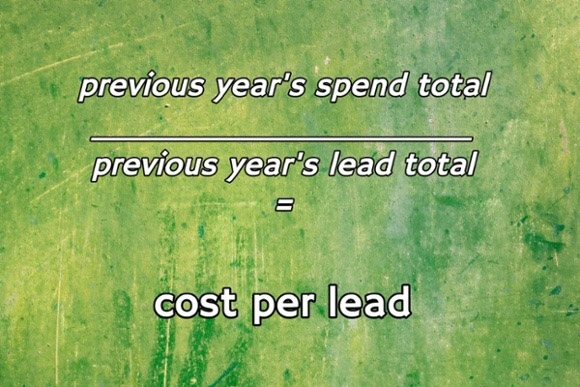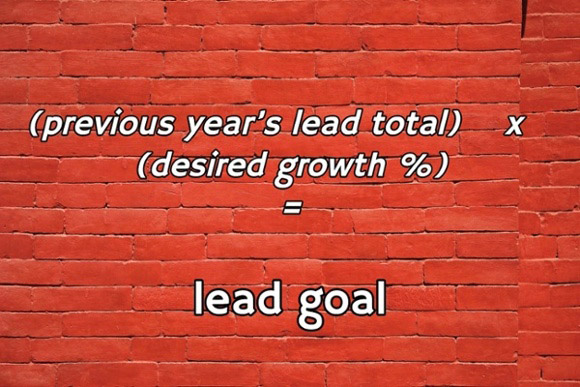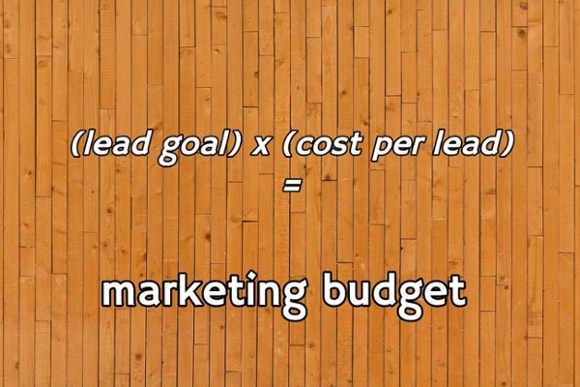Planning out a marketing budget is a laborious, often overwhelming project for even a veteran marketer. A common process is to look at the cost of the programs you want to run and attempt to establish a budget based on projected costs. If you know you want certain tools and campaigns already, this can be a part of the process, sure, but ideally you’re creating your budget based on goals rather than on tactics/tools.
And planning to grow requires knowing where you are (current benchmarks) and knowing where you want to be (goals.) In this post we’ll dig into the process of creating a marketing budget to serve you well next year.
Now this is a high-level planning post, not a dig in and start picking out programs post… We’ll dig a little deeper later in the month with suggested spend in each area and important notes per industry. If you don’t want to miss that post, sign up here to be reminded.
So that we know we’re talking about the same thing, let’s formalize some terms:
-
A marketing budget, for the purposes of this article, refers to money spent on marketing programs;be it online marketing like PPC, content marketing campaigns, e-mail marketing/automation or traditional marketing components like print projects, trade shows, out-of-home, etc.
-
A lead is any net new prospect.
-
Desired growth is the percentage by which you’d like to increase your leads.
Now it’s time to put your thinking cap on!

If you are creating your marketing budget from scratch (say in a startup or if your role has just been established), it can be difficult to project without prior efforts to lean on. For a first-time budget, an accepted practice is to use a portion your company’s sales as a starting point.
If have historical data you can review to create your marketing budget, you can establish a budget based on desired growth. To start, identify your company’s cost per lead (CPL). You can do this by taking your total marketing budget spend, and dividing it by the total number of net new leads you brought in in a given year. This will show you roughly how much bringing in a prospect costs your company. Understanding your company’s cost per lead can also help you later weed out marketing tactics that have a “high” cost per lead and low conversions (which is why you should track not only CPLs but overall cost of customer acquisition – CCA – on each project).

Now, you’ll want to establish your desired growth. Do you want to bring in 10% more leads? 40%? 70%? Apply your desired growth percentage to your total number of the previous year’s leads to find your new lead goal.

Then, take your lead goal and literally multiply it by your the cost per lead. You now have an estimated marketing budget to work with created to grow your company’s sales.

The benefit of creating your marketing budget by desired growth is that you are directly feeding leads down your sales funnel. Take care though, eventually when you change only one thing (spend) but keep everything else constant, your CPL will increase – see the law of diminishing returns. You’ll want to monkey around with more than just spend to keep the machine working well.
Are you working on next year’s marketing budget now? If so, please let us know if we can be of any assistance. We’d love to work with you.
Recent Posts
Where SEO Meets Design: Best Practices For Optimizing Conversions
October 20, 2017 . .
Do You Have Lackluster Branding?
October 20, 2017 . .
Long Tail Keywords Vs. Branded Keywords
June 7, 2017 . .
4 Things to Do Tonight for a More Productive Day Tomorrow
May 15, 2017 . .
4 Signs You Need to Bring in a Marketing Agency
May 15, 2017 . .
Business Etiquette That Will Set You Apart from the Rest
May 11, 2017 . .

